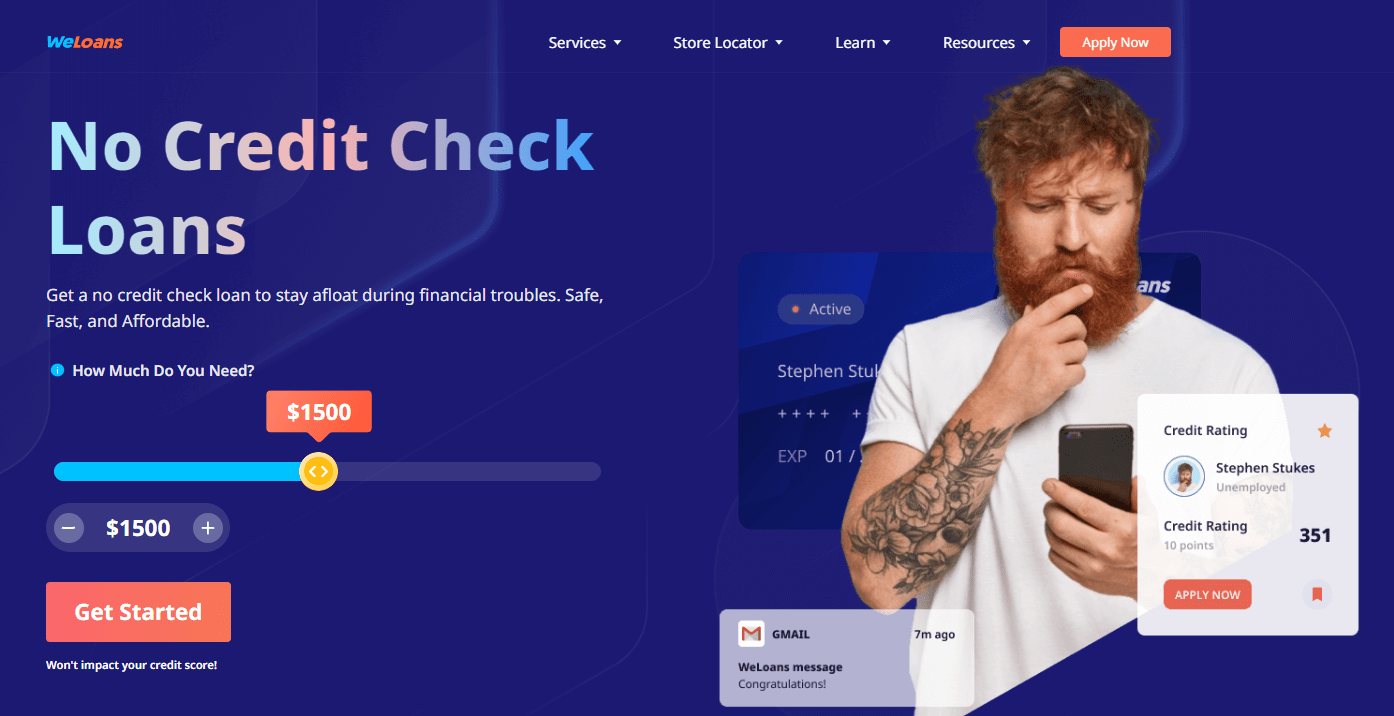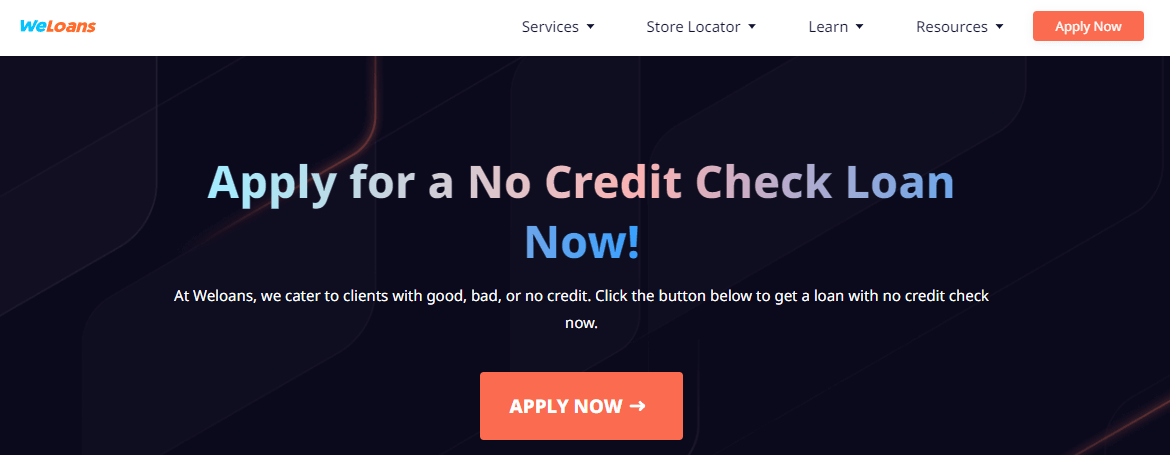As a consumer in need of quick cash, you may have considered taking out a no-credit-check loan or payday loan. These short-term lending options can provide a fast injection of funds during times of financial hardship, but they also come with risks you should understand before borrowing. Evaluating the key differences between no-credit-check loans and payday loans will help you determine which option, if any, aligns with your needs and ability to repay.
What Are No Credit Check Loans, and How Do They Work?

No credit check loans, also known as personal installment loans or bad credit installment loans, are loans offered by some lenders to borrowers without performing a hard credit check. These loans allow you to borrow money for emergencies or to consolidate high-interest debts, even with bad or no credit.
- To qualify for a no credit check loan, you must be 18 years or older, have a steady income source, and a valid ID. The lender will evaluate your income and ability to repay the loan instead of your credit score to determine your eligibility and loan terms.
- No credit check loans typically have higher interest rates than loans for those with good credit because of the increased risk to the lender. However, the rates may still be lower than those of payday loans or credit cards. Repayment periods are usually between 3 to 60 months.
- The loan amounts offered can range from $500 up to $25,000 depending on the lender and your financial situation. The funds can be used for any purpose without restrictions.
- Most no credit check loans are unsecured, so you don’t have to provide collateral. However, some lenders may ask for a down payment or offer lower loan-to-value ratios.
- To apply, you can visit the lender’s website and fill out an online application. The lender will review your information and documents to verify your eligibility before approving and funding the loan.
No credit check loans can be a viable option if you need money fast and have a limited or poor credit history. However, make sure you understand the loan terms and compare offers from different lenders to find an affordable loan that suits your needs. With on-time payments, you can even build your credit over time. Don’t hesitate to look for no credit check loans at WeLoans, a famous broker in the US.
What Are Payday Loans, and How Do They Work?
As an alternative to no-credit-check loans, you may want to consider payday loans. Payday loans are short-term loans that provide quick cash but often come with extremely high interest rates.
- How payday loans work:
You borrow a small amount of money, typically a few hundred dollars. You write a postdated personal check for the full balance, including fees, or authorize an electronic funds transfer to repay the loan. The lender will cash your check or withdraw the funds electronically from your bank account on the agreed upon due date, usually your next payday.
- Fees and interest rates:
Payday loans often come with annual percentage rates (APRs) of 300% to 500% or even higher. The actual fees charged can range from $10 to $30 for every $100 borrowed. If you cannot repay the loan in full on the due date, you may extend it for another fee. This dangerous cycle often traps borrowers in debt.
- Pros and cons:
Pros: Fast cash, no credit check.
Cons: Extremely high fees and interest rates, short repayment periods, risk of getting caught in a cycle of debt.
- Alternatives to consider:
Before taking out a payday loan, explore better options like borrowing money from friends/family, reducing expenses, finding a side gig for extra income, using a credit card, or getting a personal loan from a bank/credit union. These alternatives typically offer much lower interest rates and longer repayment terms.
In summary, payday loans may seem appealing when you need quick cash, but their predatory fees and terms often make them more trouble than they’re worth. It is best to avoid them if possible and explore better options.

Reasons to Choose No Credit Check Loans
Flexibility
No-credit-check loans provide more flexibility than traditional payday loans. With a no-credit-check loan, you have the option to pay back the loan over 3 to 24 months, depending on the lender. This extended repayment period means lower payments and less financial stress. You can browse the page of Caroline Banton on WeLoans to find out more about no credit check loans.
Lower Interest Rates
No-credit-check loans generally have lower APRs than payday loans. Payday loans can have APRs of 400% or higher, whereas no-credit-check personal loans average around 36% APR. The lower interest rates mean you pay less in interest charges, allowing more of your payment to go toward reducing the principal balance. Over the life of the loan, you end up paying thousands less.
Larger Loan Amounts
No-credit-check lenders from WeLoans’ platform typically offer higher loan amounts than payday lenders. Loan amounts for no-credit-check loans range from $500 to $5,000 or more. Payday loans are usually limited to $500 or less. The higher amounts available from no-credit-check lenders make these loans suitable for more purposes, such as paying medical bills, home repairs or other mid-sized expenses.
In summary, no-credit-check personal loans generally provide more reasonable terms, lower costs, and higher maximum amounts than traditional payday loans. For those with bad or no credit, no-credit-check loans can be a viable alternative when unexpected expenses arise or cash is needed to bridge a financial gap. However, it is still important to only borrow what you can afford to pay back to avoid getting caught in a cycle of debt.
Pros and Cons of Getting Payday Loans
Exorbitant Interest Rates
Payday loans typically charge extremely high annual percentage rates (APRs), often between 300 to 700% or more. These exorbitant interest rates mean that borrowers often end up paying back significantly more than they borrowed. For example, a $300 payday loan with a 2-week term and a $45 fee would equate to an APR of over 300%. If rolled over for a year, that loan could cost over $1,100 to pay off. The high interest rates are how payday lenders make a profit, but they severely impact consumers by trapping them in cycles of debt.
Short Repayment Terms
Payday loans also have very short repayment terms, usually 2 to 4 weeks. This means the entire loan amount plus fees must be paid back quickly. If a borrower cannot repay the loan that fast, they often end up taking out a new payday loan to pay off the previous one and getting caught in a dangerous cycle of mounting debt. Some lenders may offer longer terms of up to 3 months, but the interest rates are often higher.
Strict Qualifications
While payday lenders market these loans as easy to qualify for, the reality is that their qualifications are quite strict. Applicants typically need a steady income, a bank account, and valid identification to qualify. Those with bad or no credit history may be approved, but people on fixed incomes or government benefits usually do not qualify. The strict qualifications, combined with the predatory practices, show that payday lenders target vulnerable consumers.
Risk of NSF Fees
If a borrower’s bank account does not have enough money when the payday lender attempts to withdraw funds to repay the loan, the bank will charge non-sufficient funds (NSF) fees. These fees then become the responsibility of the borrower, adding even more costs to an already expensive payday loan. Some lenders may allow for extensions or alternative payment plans, but additional fees usually apply.
In summary, while payday loans may seem like an easy option in times of financial hardship, their predatory practices, exorbitant interest rates, short terms, strict qualifications, and risk of extra fees often do more harm than good, creating cycles of debt that can be hard to escape. There are usually better solutions, like borrowing money from friends/family, reducing expenses, or seeking assistance from a nonprofit.
Conclusion
In the end, neither no-credit-check loans nor payday loans are ideal options, but for those with poor credit and limited options, they can provide temporary relief in times of financial hardship. Carefully weigh the pros and cons of each based on your unique situation.
If possible, explore other options first like borrowing from friends or family, reducing expenses, or finding additional income sources. Whatever you decide, make sure you fully understand the terms and fees involved before signing on the dotted line. With prudent decision-making, you can choose an option that helps you meet your immediate need without creating an unending cycle of debt. There are always better solutions out there if you look for them.



